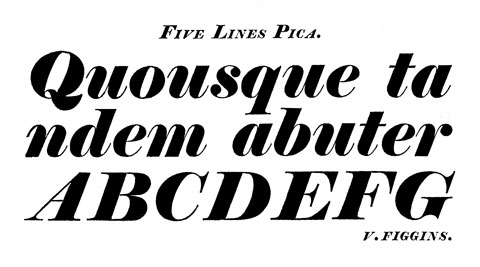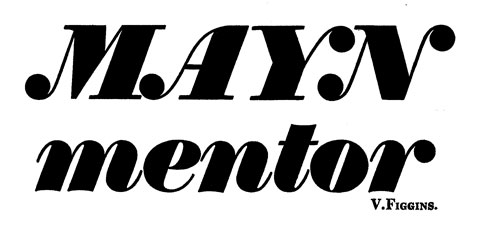
A hand mould, for the casting of metal printing types.
The British punch-cutter and typefounder Vincent Figgins (1766-1844) ran a notable London typefoundry and is credited with designing the first Egyptian (slab serif) typeface, which he simply named ‘Antique’ and released in 1815. Figgins was originally apprenticed to the typefounder Joseph Jackson, a student of William Caslon I, and established his own typefoundry in Swan Yard, Holborn Bridge, in 1792.
Figgins’ designs reflected a trend in the early nineteenth century toward the use of bolder types, rather than the lighter faces popular at the end of the previous century. The new style of types met with a mixed reception, with descriptions of them ranging from “the most brilliant typographical innovation of the nineteenth century” to them being described as a “typographical monstrosity”. Figgins is also believed to have introduced the term ‘sans-serif’, with the introduction of a typeface of that name in the 1820s – possibly 1828.
All images shown below have been extracted from the book ‘Vincent Figgins Type Specimens – 1801 and 1815’, published in 1967 by the Printing Historical Society. This book reproduces, in its entirety, a publication of specimens of printing types by Vincent Figgins dated 1815 showing a range of types and typographic ornaments ranging in size from sixteen lines Pica down to Diamond at a diminutive 4½pt.










One Trackback
[…] paths, this was one of the earliest grand memorials to be erected. Some of his work can be seen here, he designed some very attractive […]